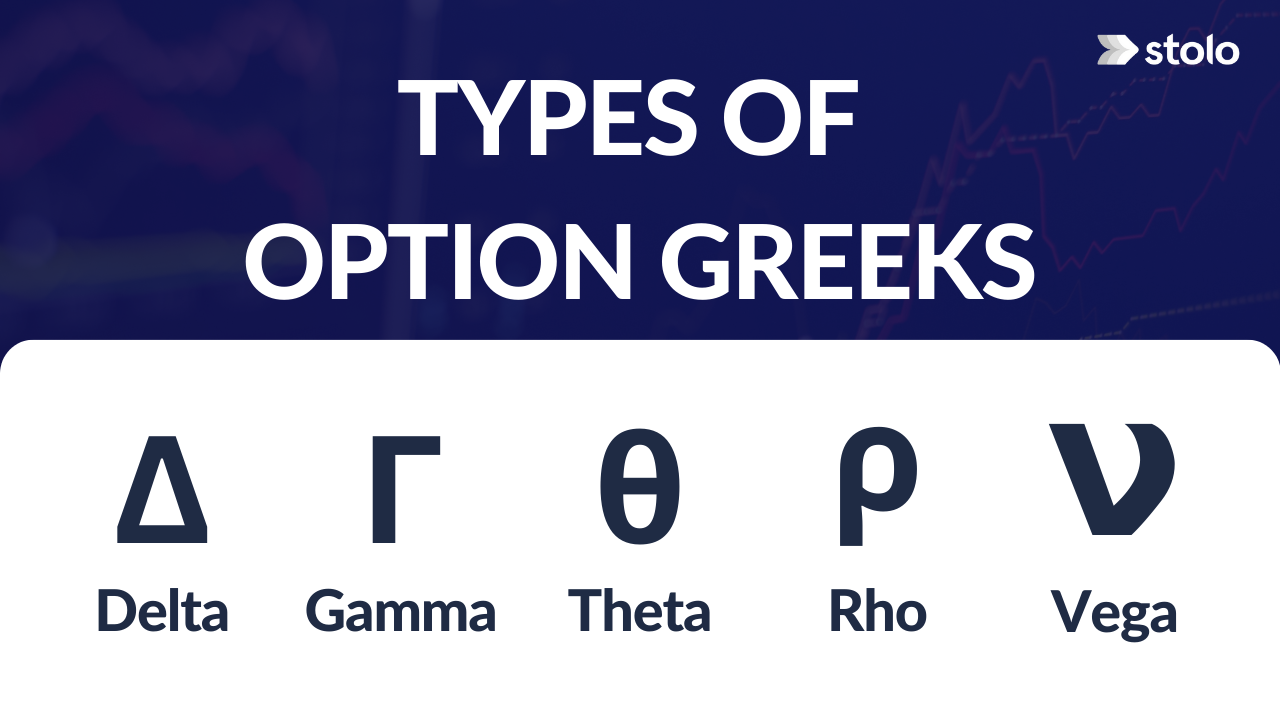Options trading may be a difficult and time-consuming activity, with several factors influencing the price and value of an option contract. Option Greeks are a significant tool that traders use to help them comprehend and analyse a specific deal’s risk and possible rewards.
What are Option Greeks?
Option Greeks are simply mathematical formulas that aid in calculating the risk of options trading. They consider aspects such as the underlying asset’s price, market volatility, the time remaining till expiry, and other crucial variables. In this essay, we will look at the main option greeks and how they operate.
Types of Option Greeks
The five types of Option Greeks include

1. Delta
Delta is the most famous Greek choice. It quantifies how far an option’s price will fluctuate due to a change in the underlying asset’s price. We usually represent Delta as a number between 0 and 1, with larger values suggesting a stronger connection between the option price and the underlying asset price.
For example, if a call option has a delta of 0.75, it indicates that for every one rupee increase in the underlying asset’s price, the option price will rise by 0.75 rupees. In contrast, for every reduction in the underlying asset’s worth, the option price falls by 0.75 per rupees.
2. Gamma
Another critical Option Greek is gamma, which quantifies the rate of change of an option’s Delta in reaction to a change in the underlying asset’s price. You can interpret a gamma as a positive number that’s a measure of the option’s acceleration. The gamma determines how rapidly the option’s Delta varies in reaction to changes in the underlying asset’s price.
For example, if a call option has a gamma of 0.10, it indicates that the option’s Delta will increase by 0.10 for every one rupee increase in the underlying asset’s price. In contrast, the option’s Delta will reduce by 0.10 for every underlying asset’s price decline.
3. Theta
Theta is a negative integer representing that options lose value over time. It is the pace at which the value of an option depreciates over time as the expiry date approaches. Theta is most decisive for near-expiration at-the-money options.
For example, if the theta of a call option is -0.05, the option’s value will fall by 0.05 rupees every day as the expiry date approaches. This value decay is known as time decay, an essential component in options trading.
4. Vega
Vega is the rate at which the value of an option changes in reaction to changes in the market’s implied volatility. Implied volatility measures the underlying asset’s predicted volatility based on current market circumstances. Vega is a positive statistic representing the notion that higher levels of implied volatility often result in higher option pricing.
For example, if a call option has a vega of 0.15, it indicates that its value will increase by 0.15 for every 1% increase in the market’s implied volatility. If the implied volatility falls by 1%, the option’s value drops by 0.15 points.
5. Rho
Rho is the rate at which the value of an option changes in reaction to a change in interest rates. A positive number represents that rising interest rates often result in higher option pricing.
For example, if the rho of a call option is 0.05, the option’s value will rise by 0.05 with every 1% increase in interest rates.
Conclusion
To summarise, knowing option Greeks is critical for every options trader attempting to assess a deal’s risk and possible benefits. When making informed trading selections, Delta, Gamma, Theta, Vega, and Rho are all significant aspects to consider. Traders may make better-educated decisions and boost their chances of success in the options market by grasping five essential principles. Understand how option greeks affect the price of an options contract with Stolo option chain analysis and charts.

